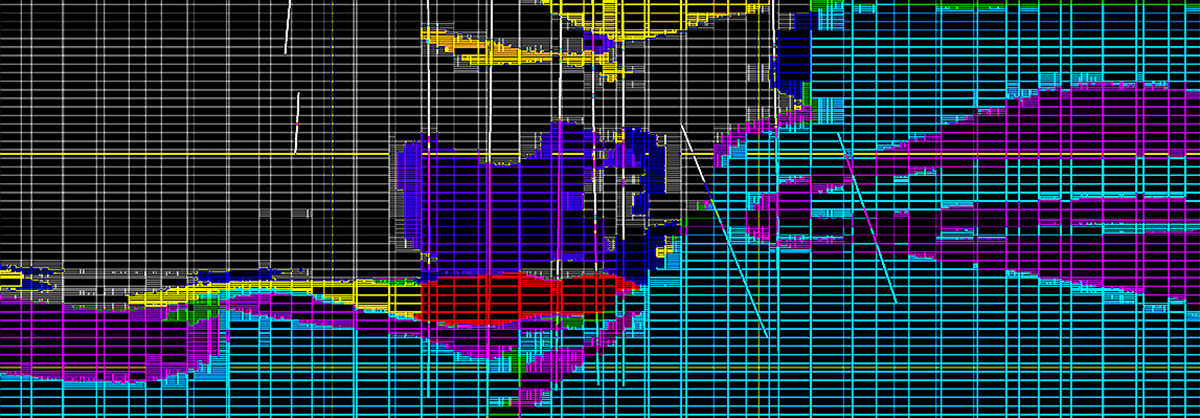March 2020 Issue Index
Machine learning for fault identification
The revolutionary Maptek DomainMCF machine learning engine for orebody modelling is helping identify faulted geology in record time.
Identifying and predicting faults is vital in both open cut and underground operations. Engineers who prepare operational mine plans need to ensure the stability of walls, drives and stopes. When using methods such as block caving they must understand the natural geology to safely and efficiently control the undermining process.
Maptek DomainMCF provides geologists with tools to bypass cumbersome manual processes. Applying cloud processing and machine learning to drillhole and other data enables output of a geological model in minutes to hours, rather than weeks to months.
Maptek Technical Specialist, Steve Sullivan says the testing and implementation of DomainMCF has revealed an unexpected strength.
‘Fault identification wasn’t the top priority when we began working on this product,’ Sullivan, a geologist himself, said.
DomainMCF looks at the local and surrounding data, taking into account the orientation, width and other characteristics, and automatically works out where two intervals are not continuous and have been displaced.
No manual intervention is required, unlike with grid-based and implicit modelling that wrap a continuous surface between geological data intersections. Modelled fault breaks in DomainMCF are easily visualised and provide a red flag for geologists to further analyse the model.
Traditionally, geologists would laboriously identify and interpret fault traces from drillhole data, a sometimes difficult task where faults could be overlooked with potentially disastrous consequences.
‘Faults can range from a couple of millimetres to hundreds of kilometres. Some can be fairly subtle and not easily recognised, nor built into usable entities for mine planning,’ Sullivan said.
‘Implicit modelling shows veins with smooth curved boundaries between drill data. Only when you’re underground or in the open cut do you see the actual fault dislocation. The interpreted position of the orebody or coal seam then changes and if you haven’t adjusted for it you could put machinery in the wrong place.’
DomainMCF results correlate well with clients’ interpreted fault models for precious metal veining, iron ore deposits and breccia. However, DomainMCF models are created in a fraction of the time.
Machine learning gives geologists more time to analyse results, change settings and run multiple iterations to refine outputs to provide engineers with the best possible models.
‘Traditional techniques have required a lot of manual intervention, time spent drawing CAD lines, making modifications, wireframing and implicit modelling. There’s not a lot of geology thinking involved — it’s mostly what you might call hack work,’ Sullivan said.
‘DomainMCF puts geology back into the geologist. Computers do the heavy processing and geologists use their investigation skills, which is why we took up the profession in the first place.’
DomainMCF is easy to use. Once data has been validated, users can drag and drop the required component files into the interface for processing.
Machine learning consumes the vast amount of data collected daily on mine sites. A recent model with 2.5 million pieces of information was processed in a couple of hours.
‘DomainMCF digests drillhole data, underground mapping, assays, lithology and open cut spot samples. The more data you’ve got, the better,’ Sullivan said.
Maptek is working to incorporate more types of data, including geophysical and measurement whilst drilling (MWD), into the DomainMCF modelling process.
- Machine learning bypasses cumbersome manual geological modelling and reveals scope for accurate, intuitive fault prediction.
- Fault breaks are easier to identify and incorporate in modelling, lowering risks for mine planning.
- Speed of the Maptek compute framework provides huge efficiency gains and a more complete picture of deposits.

